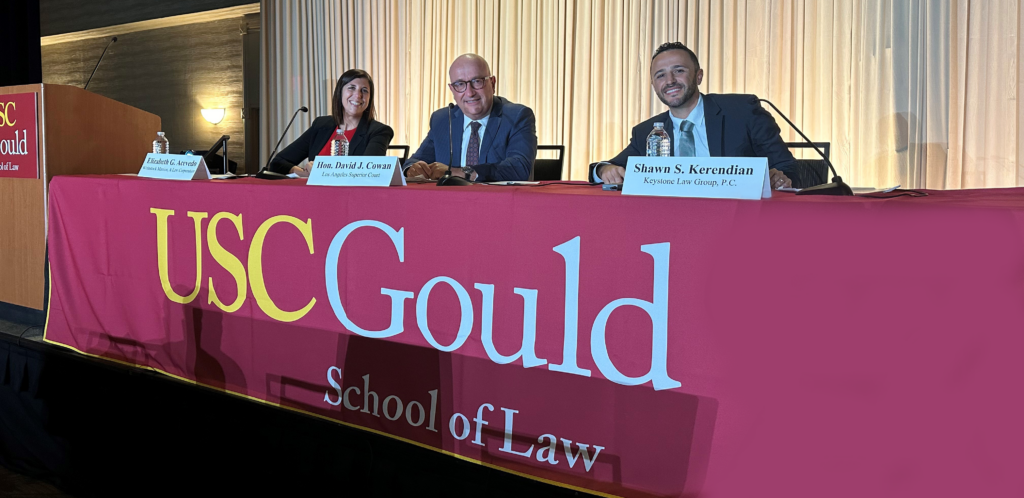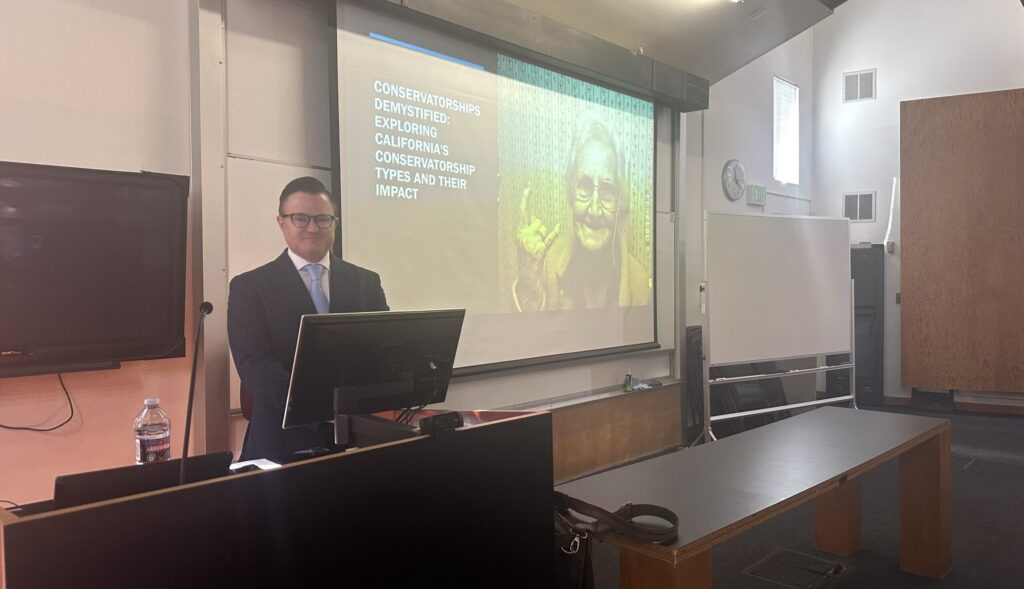
This article provides an update on the California Supreme Court’s review of Haggerty v. Thornton, the Courts of Appeal case discussed in “When a Trust Modification Method Is Specified in the Trust Instructions – That Method Must Be Followed Exactly for a Trust Amendment to Be Valid.”
If a trust creator (referred to as a settlor, grantor or trustor) executes a revocable living trust and later wishes to change it, the settlor can either follow the method specified in the trust instrument, if any, or the statutory method for amending the trust.
In Haggerty v. Thornton, the California Supreme Court examined if the statutory method for trust modification found in Probate Code section 15402 is available when the trust document itself sets forth a method for trust modification.
Haggerty v. Thornton: Case Background
Before Haggerty, there was a split of authority among the appellate courts in California as to when the statutory method could be used for trust modification. It was clear that if a trust did not contain language regarding modification, then the trust could be amended in the same way it could be revoked, either through the statutory method or any revocation method provided in the trust.
Settlor’s Trust Amendment Follows Statutory Method But Disregards Trust Instructions
Jeane M. Bertsch (“Settlor”) created a trust in 2015 that included a provision reserving “[t]he right by an acknowledged instrument in writing to revoke or amend this Agreement or any trust hereunder.”
In 2016, the settlor amended the trust to provide a distribution to her niece, Brianna McKee Haggerty (“Brianna”). The amendment was signed by the settlor and notarized.
In 2018, the settlor drafted another amendment that did not include Brianna as a trust beneficiary. The settlor signed the 2018 amendment, but she did not have it notarized.
The 2018 amendment complied with the statutory method, but not with the modification method specified in the trust, which required an “acknowledged instrument” (i.e., required notarization). Subsequently, a lawsuit was filed as to the validity of the 2018 amendment.
Supreme Court Examines History of Statutory Methods for Trust Modification and Revocation
In resolving the split of authority among the appellate courts surrounding what makes an amendment to a trust valid, the California Supreme Court examined the history of Probate Code sections 15401 (governing the procedures for revocation) and 15402 (governing the procedures for modification), which were enacted in 1986.
Previously, revocation had been governed by former Civil Code section 2280, but there had been no statute addressing trust modification. The courts had held, in general, that the power of revocation implied the power of modification, and had applied trust revocation rules to trust modifications.
What Does Probate Code Section 15401 Say About Trust Revocation?
Probate Code section 15401 states that a revocable trust may be “revoked in whole or in part by any of the following methods:
- By compliance with any method of revocation provided in the trust instrument;
- By a writing, other than a will, signed by the settlor or any other person holding the power of revocation and delivered to the trustee during the lifetime of the settlor or the person holding the power of revocation.” (This second method is referred to as the “statutory method.”)
Notably, Section 15401 adds: “If the trust instrument explicitly makes the method of revocation provided in the trust instrument the exclusive method of revocation, the trust may not be revoked pursuant to [paragraph 2].”
What Does Probate Code Section 15402 Say About Trust Modification?
Probate Code section 15402 states, “Unless the trust instrument provides otherwise, if a trust is revocable by the settlor, the settlor may modify the trust by the procedure for revocation.” The Haggerty case defines what “provides otherwise” means.
Prior to Haggerty, three districts of the California Courts of Appeal had each determined a different interpretation of what “provides otherwise” means, including:
- “if any modification method is specified in the trust, that method must be used to amend the trust.” (King v. Lynch (2012) 204 Cal.App.4th 1186, 1193)
- “unless the trust provides a modification procedure and explicitly makes that method exclusive.” (Huscher v. Wells Fargo Bank (2004) 121 Cal.App.4th 956, 967)
- “unless the trust instrument distinguishes between revocation and modification.” (Haggerty Thornton (2021) 68 Cal.App.5th 1003, 1011)
The natural reading of the statute is that the settlor may amend the trust using any procedure for revocation unless the trust instrument states that the settlor may not. This is supported by the plain meaning of the term “otherwise.”
Furthermore, a trust that merely specifies a method of trust modification without limiting settlors to the use of that method does not preclude the use of revocation procedures in the trust instrument or in the statute.
If a procedure for trust modification specifies that it is the exclusive procedure, then that is the only way the trust can be amended. On the other hand, if the procedure for trust modification is merely one method of modification, then either the procedure provided in the trust instrument or the procedure provided by the statute may be used to amend the trust.

Results: Method of Revocation Is Available as a Method of Modification Unless the Trust Specifically Prohibits It
The Supreme Court examined the legislative intent behind Section 15402 and found that the legislature intended to codify the preexisting rule that the power of revocation implies the power of modification. Furthermore, the legislature intended to expand the availability of the statutory method for both revocation and modification.
In explaining its recommendation to codify Section 15402, the California Law Review Commission (“Commission) stated: “Under general principles the settlor may modify as well as terminate a revocable trust.”
The Section 15402 Commission commentary makes clear the statute was enacted to codify the preexisting rule that the power of revocation includes the power of modification. Thus, an available method of revocation is also an available method of modification. This is true unless a trust term precludes the use of any method of revocation or modification.
Commission statements about trust modification indicate that modification should be governed by the procedures for revocation unless the settlor makes clear an intention to establish a different rule.
The power to revoke does not include the power to amend where the only power reserved is to revoke the trust in its entirety. The court also looked at legislative intent behind Section 15401. The Commission proposed to make the statutory method more readily available for trust modification and revocation.
The power of revocation historically has implied the power of modification, and the Commission’s intention was to codify that rule. Similar to Section 15402, the intent behind Section 15401 was to expand the availability of the statutory method for revocation and modification. Section 15401(a)(2) prioritizes the availability of the statutory method while allowing settlors to bind themselves to more onerous procedures if they so wish.
The mere fact that a trust instrument distinguishes between modification and revocation by authorizing certain procedures for revocation and other procedures for modification does not suffice to preclude the use of revocation procedures for modification.
The California Supreme Court ultimately determined that a settlor may modify the trust using any procedure for revocation unless the trust itself says the settlor may not.
Should Trust Modification Methods Be More Complex Than Revocation Methods?
In Haggerty, Brianna argued that policy supports making modification more difficult than revocation to protect settlors from undue influence. The court was not convinced and stated that someone under undue influence could revoke a trust in its entirety and create a new one. Assets could easily be transferred out of the trust, so making modification more difficult was not protecting the settlor.
The court looked at the policy choices the legislature did make, not the choices it could have made, and found that legislative history supports the view that the statutory method is available for trust modification unless the trust instrument “provides otherwise” by expressly precluding it or by explicitly making a different procedure exclusive.
Key Takeaway: Non-Exclusive Methods of Trust Modification Allow for More Flexibility When Amending a Trust.
As a result of Haggerty, unless the trust instrument expressly provides an exclusive method of trust modification, or otherwise expressly precludes the use of revocation procedures for modification, the statutory method of revocation is available to modify the trust in addition to any non-exclusive methods for trust modification listed in the trust terms.
That statutory method allows trust modification by “a writing, other than a will, signed by the settlor or any other person holding the power of revocation and delivered to the trustee during the lifetime of the settlor or the person holding the power of revocation.”
For example, if a trust says that it “may only be modified by an acknowledged instrument in writing,” then it would preclude modification via a different method of revocation because of the use of the word “only.” If the trust, however, says it “may be modified by an acknowledged instrument in writing,” it does not preclude modification via the statutory method.
It should go without saying how important it is for settlors who wish to maintain flexibility when amending their trust to communicate their preferences with their estate planning attorney to ensure the method of modification included in the trust instructions isn’t exclusive.
While exclusive methods of revocation may provide slightly more protection to settlors, they may not always be necessary and may increase the likelihood of settlors’ trust changes not meeting the trust amendment requirements. This could result in the trust changes being invalidated following settlors’ deaths.
Need help navigating a trust? We can provide guidance
Whether you are creating, disputing or managing a trust, seeking legal guidance is essential. Trusts are complex legal arrangements, so even a small error could result in significant consequences.
At Keystone Law Group, we focus exclusively on probate litigation and administration. For those seeking assistance in creating a trust, we are happy to provide referrals to trusted estate planning attorneys. However, if you are involved in a trust dispute or require assistance with managing a trust, our team of experienced attorneys can help with any challenges you may encounter.
Call us today to request a consultation and discover how we can support you in navigating your legal matters. We look forward to assisting you.












